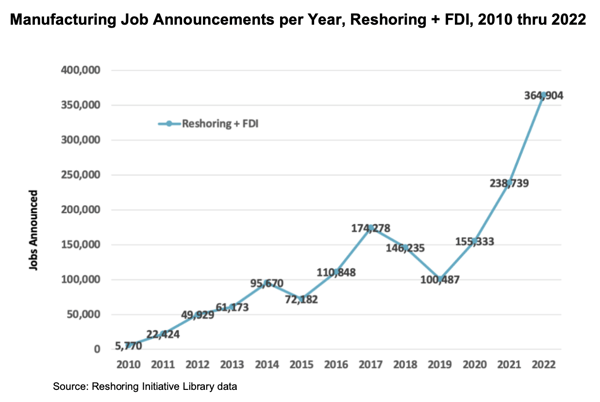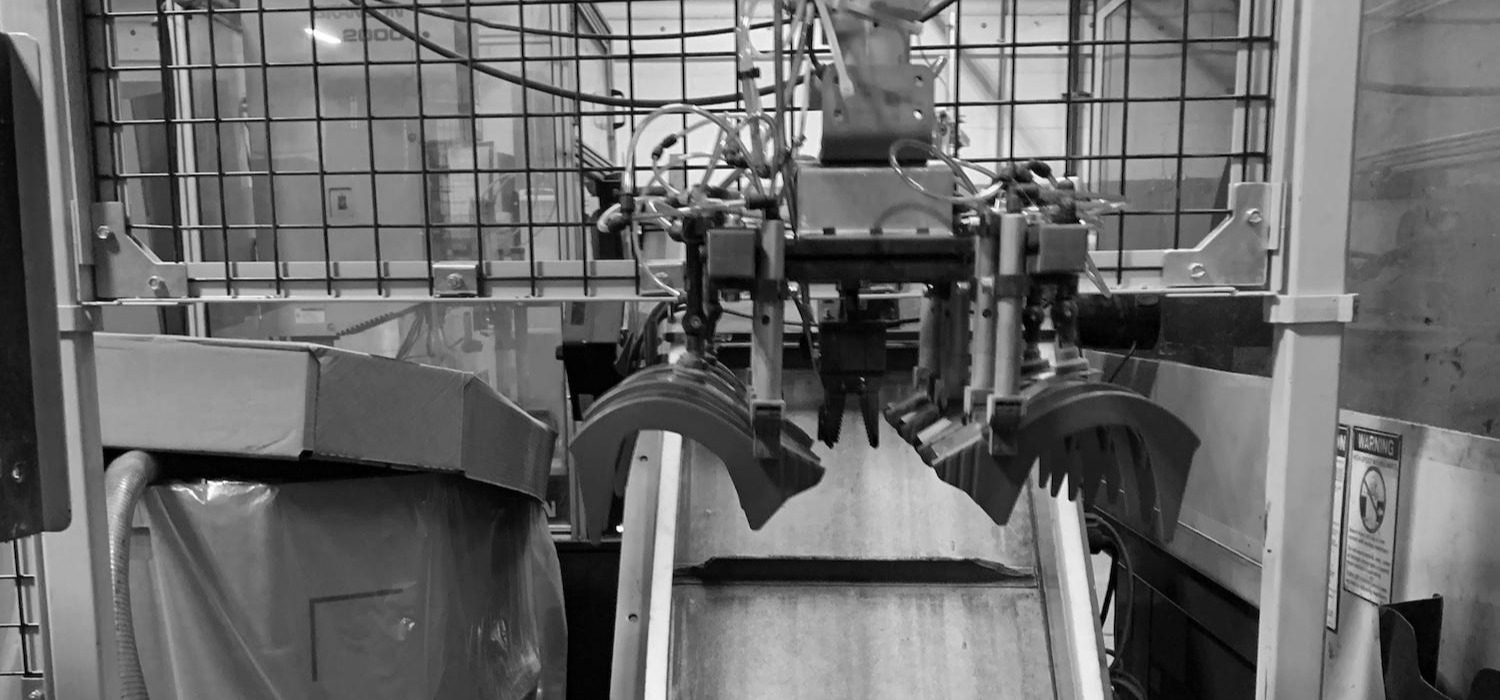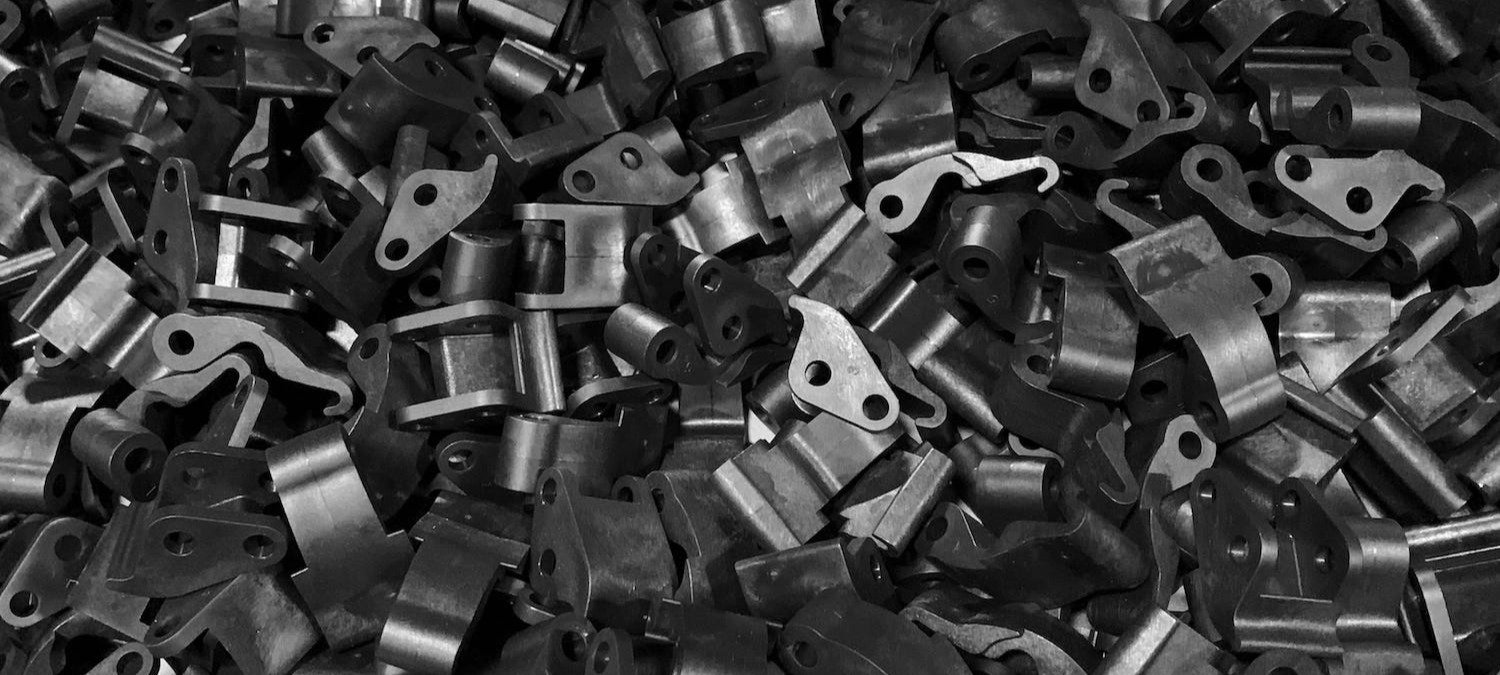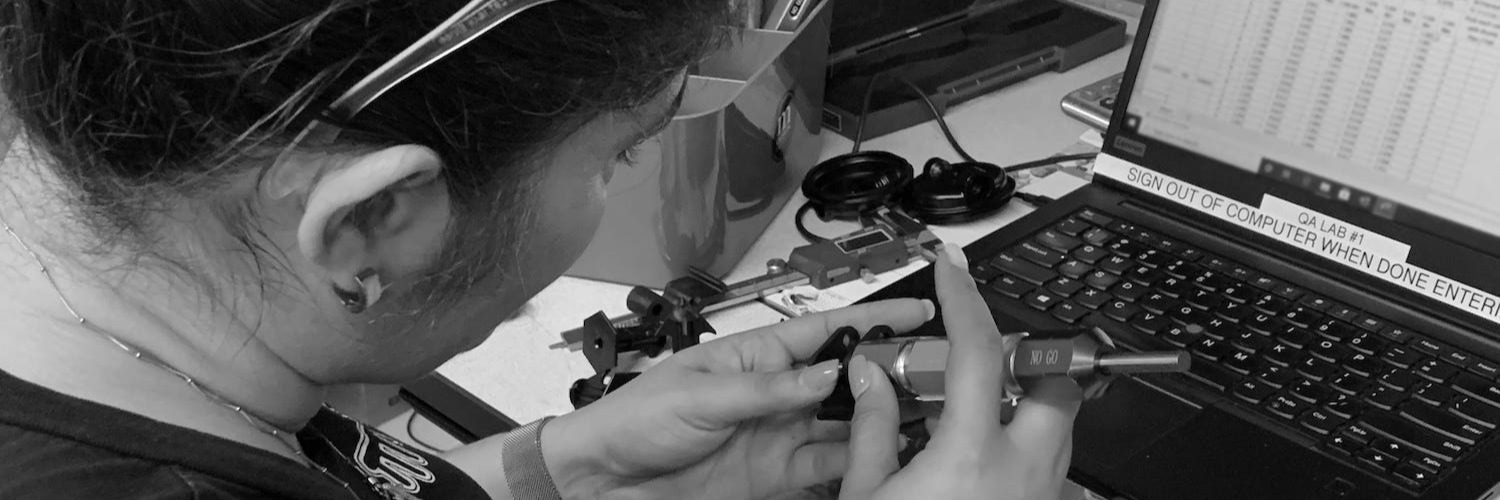We are all familiar with the practice of offshoring: sourcing manufacturing work overseas in pursuit of lower labor and material costs. Over time, increased offshoring contributed directly to the long-term erosion of the United States’ domestic manufacturing capabilities.
Today, more and more companies are “reshoring” their manufacturing work to American companies. As a leading custom plastic injection molder, Molding Dynamics has taken on a number of reshored projects, and we have witnessed this trend take off over the last several years.
Based on our experience and the research presented below, the reshoring trend is accelerating because, simply, it makes good business sense for a wide variety of industries. In this article, we explain why.
What is Reshoring?
Reshoring is the practice of bringing manufacturing and services back to the U.S. from overseas. Today, reshoring is making a comeback after decades of more and more US manufacturing moving abroad.
According to Forbes, “In the late 1970s, America’s most prominent public companies began offshoring manufacturing in order to maximize profits for their shareholders. By offshoring to countries with fewer labor and environmental regulations, the U.S. was able to generate enough profit to mitigate the enormous cost of shipping finished goods and even raw materials internationally.” This trend only accelerated in the new millennium. The OECD notes that “between 2000 and 2010, US manufacturing experienced a nightmare. The number of manufacturing jobs in the United States, which had been relatively stable at 17 million since 1965, declined by one-third in that decade, falling by 5.8 million to below 12 million in 2010,” largely due to the effect of offshoring.
This trend only accelerated in the new millennium. The OECD notes that “between 2000 and 2010, US manufacturing experienced a nightmare. The number of manufacturing jobs in the United States, which had been relatively stable at 17 million since 1965, declined by one-third in that decade, falling by 5.8 million to below 12 million in 2010,” largely due to the effect of offshoring.
Today, this trend has finally reversed. According to the Reshoring Initiative’s 2022 data report: “2022 reshoring + FDI [Foreign Direct Investment] manufacturing job announcements were at the highest rate ever recorded, with a total of 360,000+ jobs, a 53% increase from the 2021 record. A huge surge in EV batteries and chips combined with a continued trend in a broad range of industries enabled the new record.
Companies are pivoting to reshoring for good reason. Reshoring can drive wide-ranging benefits including:
- Shrinking the trade deficit while creating good-paying manufacturing jobs.
- Helping nurture valuable skills in the US workforce.
- Reducing the total cost of products and encouraging product innovation.
How can reshoring reduce the total cost of manufacturing projects that were off-shored to save money in the first place? In short, working with offshore suppliers comes with hidden costs in terms of longer lead times, more cumbersome collaboration, and even less secure intellectual property. We take a more detailed look at these factors in the context of plastic injection molding below.
What are the Benefits of Reshoring Your Plastic Injection Molding Project?
For most companies, the reshoring versus offshoring decision is all about costs. Due to lower labor rates, fewer regulations, and less safe working conditions, overseas providers can often offer the lowest bid on a project. But, as many customers learn the hard way, the hidden costs associated with off-shored projects can quickly erode the supposed cost advantage compared to working with a domestic manufacturer.
In addition to the hidden costs listed below, it’s important to note that even the direct costs of offshoring are not as low as they used to be. As markets like China have grown, so have their wages. China, for example, is already seeing a large-scale shift of lower-value manufacturing tasks to lower-wage regions like Vietnam. Labor and material costs are still lower in many overseas regions, but costs are far closer than they were at the peak of outsourcing 10-20 years ago.
Reshoring Benefit #1: Reducing Transportation Costs and Lead Times
Of course, the cost of transporting goods across the world inflates the overall price of offshore projects. This cost is usually relatively straightforward and often factored into the bid provided by overseas providers (although there’s nothing straightforward about waiting for your products while they pile up outside a backed-up port for 25 months). Over time, however, growing sustainability concerns are likely to cast a harsher light on the carbon, energy, and environmental costs associated with shipping products across the globe, often from jurisdictions with few environmental regulations.
More broadly, the critical issue here is increased lead times. At a high level, longer lead times make it slower to respond to new market demands. If a project is not particularly time-sensitive, however, a company may feel as if a longer wait is not an issue. But the greater risk from longer lead times is the lack of responsiveness when, for example, quality issues arise. A domestic producer, for example, has a transit time of 2-3 days. If quality issues are detected in a batch of arriving products, only a few days of production are affected before the issues are flagged, a replacement batch can be sent in short order, and returning the defective product for potential rework is relatively simple.
This entire process can look very different if shipping the same product from overseas. Consider a customer that identifies a quality issue after waiting for 8 weeks for an overseas shipment to arrive—only to discover that the next two batches are already inbound on ships, with no economical options for rework, and months to wait for a replacement.
Reshoring Benefit #2: Ensuring Intellectual Property Protection
Many parts of the world lack the intellectual property protections afforded to companies in the United States, and these same regions are often unable or unwilling to enforce US IP regulations.
The lack of intellectual property protections in many world geographies may put valuable company design secrets and know-how at risk. For some overseas suppliers, selling proprietary designs and techniques to competitors is part of the business model. Hyper-low bids may even be cover for the real business: selling customers’ secrets. Unfortunately, these customers often have little recourse when they see a product that looks suspiciously identical to their own enter the market a short time after outsourcing their project. This article provides an interesting breakdown of 10 real examples of offshore IP theft.
Reshoring Benefit #3: Streamlined Communication Supports Flexibility and Value-Added Collaboration
Working with an overseas supplier often means more cumbersome communications, with limited opportunities for in-person collaboration. Everything takes longer due to different time zones, language barriers, and delays in responding to day-to-day communications.
In our experience working on injection molding projects across a variety of industries, collaboration on the cost, form, function, and manufacturability of a design is an indispensable part of the process. Our team is always a quick phone call away (access that proves invaluable when, for example, a design requires a last-minute change). Ultimately, working with domestic injection molders offers improved responsiveness, more flexibility, and more freedom to work hand-in-hand with your vendor to customize your design.
Key Considerations When Reshoring Injection Molding Projects
Due to all of the benefits outlined above, reshoring injection molding projects offers outstanding value to a variety of businesses, and there’s a reason this trend continues to pick up steam. Offshore production might still make sense for certain industries, projects, or budgets. But it will almost always be worth an organization's time to think more holistically about cost, risk, and long-term strategy when sourcing an injection-molded part.
Each of these factors needs to be considered as part of any reshoring vs. offshoring decision:
- Total cost analysis, including a methodology for evaluating hidden costs. If you aren’t sure how to get started, the Reshoring Initiative provides a helpful total cost of ownership (TCO) estimator tool here.
- Think beyond individual projects and consider the importance of establishing long-term supplier partnerships with value-added vendors who can help refine part designs, catch manufacturability/quality issues early, and ideally become a trusted provider for future projects.
- If offshore providers are offering a bid that seems too good to be true, reach out to domestic providers to talk through the cost difference. A knowledgeable, hands-on manufacturer should be willing to work with your team to understand what is driving the cost gap. You can learn more about the factors influencing injection molding costs in our article here.
The Future of Reshoring in Plastic Injection Molding and Beyond
The reshoring movement is just getting started, and we are optimistic that the coming decade could see a much-needed restoration of US manufacturing capabilities. That’s because, for all of the reasons explored in this article, this shift isn’t happening due to patriotism or a temporary backlash to COVID-era supply chain disruptions. It’s happening as part of a broader reckoning with the true costs of offshoring and growing first-hand experience with the headaches that come with offshore projects. There is also a growing recognition that resilient, agile supply chains rooted in trusted supplier partnerships offer long-term value that far exceeds the superficial savings of lower labor costs.
If you are interested in working with a domestic producer of custom injection-molded parts and a proud supporter of US manufacturing, we invite you to explore Molding Dynamics’ capabilities here.






